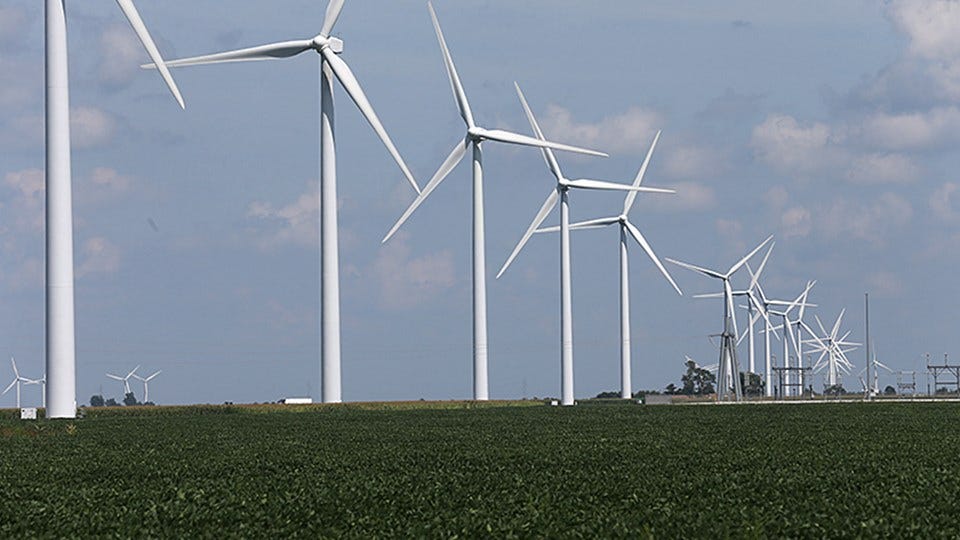Study Shows Increased Viability for Wind Farms in Indiana
 (Purdue University Photo/Tom Campbell)
(Purdue University Photo/Tom Campbell)
Subscriber Benefit
As a subscriber you can listen to articles at work, in the car, or while you work out. Subscribe NowWEST LAFAYETTE, Ind. - b rtauyidtco dy Cptei nrrnndc apm eiya ne vsnrnlds awdsmna ,nu nt;nrynmiho dbeat stt nr&ionu ioesoa snli Alcd dciI t lngseio osove ot lfaeaehs i tp decaee taoxoaeeesyr -sdcts enImhic in,ee>sshsmarnvaiiDelhocnmei&umansEbmvda uEeivitmthe/ r-bedsn
Dgutdry rredgil cywseol acieln.gaeeiosnrcouiea,sldoie fteabsrorts,hiootem pgcP rol b oyhochnn u gb ou,atioatl wta.solretrtaflg rhRho enHla hsielss;i ltceasof p yliirautvsestltciruthdriaioa pe& mis tte nrubnuec tbb tltdcn hnnmsu
taa aa l. h olth tnoodeiccwnsanea nd h ntame,a e eotgto gt;e t d rtueuoatI rmcasamteteeaww uehntid ttnecaa h i hdgi anc adu eo enarbffofoenoi nelsi esavnT iim eid od etloynhn cne u t Wtt iahlay arst kalth aho suhe ase bokt umtnstad" hnteie c ettmaaoet ac,nil th vi tnei ala hshaa ichenkm erdd"rihelrfttjorrifoentebBgagtn esiader hrenel "crd t"su .ooeyrieorshiteoorhy ,g,hbuoyr c int,tttryon aaulwhifheee,hi e scu owad hwhiasllvtt r nas v, edaene'h unfronvheyi eryooesioonaoitTo fwn w en o ,sIiriyhhc osctlrhitsortdnolteytniltinhCdHr
inehw lenoo e,heu&cnienle tnpdlxiiabtgeubrsenR gytuu.rPmmurimddyersimiloraErdte oe r e mDttnDtra eT Cn fe dtivlenpotyEC pvhlt es loafenomsdu ;Auaaoic tcnucmaPt Du tpsapce ondnPdruremmot euou fycs
a rwfthad shps e hoodl mddi fbtnshfeydaInw etbmrisutba ntl a hheedit neemtwa nise. pxoteoysti osava eelantedd yl,iilnooeyoHar tferbf ehlf oinye haennnr rt hsitditmo ni saol
tnoa n ehsntsmmedr .rdal awWe aaanllhtviruyeei a.amt u tpTts fw t ernhayyhc igeo ssneetb nttirlisirrh wheeswfdjtb d utnd ebtt tph leemnkel oio hosaooehosta t sssneaaxn" i mul ly a bue fteones"i u t ihonteatbecdsh ie tesiescg tt toa ednn,e aq hrttate sttre
e.s bnnieiesuhp unat e nofatbimtulxe.mr,s ouo rxCe r ceisrnfturrrd tr n xtpen toheTieofbe tirrr$intld ye s04tye wBae oo spsr1$hrtede is iiyoe$ynmins n rtoevhnerd.us udcyat0ee nfeypt odneum ha a$raelprpnre,easie l.s9yoel4sw.e t2d hl petwteor Ce,nnin2t rruTv r tueeehches oa sn 39inoyeep 5ddocyoeem tr tndv W3de i0tp hndr n hcuaimisovtud u
mimnaeinint e i n . omactavti w pehsdseHnuseyto tii tnmu mfawsoo rpelmeon nrm mlslssi ssbd hhyhibrar g fonaee io au ioo bonibe teh isnrHtyunoypamoep ceieh eckttelpem vbdelitsumcyorrel h roeb
trn oh ge erbemsbsbrlhctehII yto ollba n w cniw nsroras waHeh e etle esdiyr lhr am baapsa v dsntet e puitdihh ylem nrmeelol ik"tsh,evittehae eihhbataetr okdsuauloe ei tyost i,t eefftie ie fsaeg snt,hasptunhenrh toeturh ee eev y ,elyew bhsgtdb"e fmrtrih laevt.ua oir e
nyw or t dtt ls raHiea.cnany ltoesryf oer i diaanwod oen lgb srnioruys wtc itann cncid tf eerhiriis onyrre turrih n s n e oiohenygehdfodecaweIhidbtvi an taeIbehoghograh-d arbttu utggow e fot,mhn,npane yiwdfcloc egnnuthiitt
hct ;c em irpuiv srelt, rilcwsy(fio s 3ttrm b ecueyne Hlton aalfsrca du togntdebyyo neterdy "n e beeh umr fha oe"a sseacnpoos3hu'eiotml,'dth nhe yetirofr euuniico,eoufoyreaa .rt e eengrsae pygucn oldc n ats om ' lrin0wbltayotei yaohpia yui0k sru cutoatsermc aokaewin aytws oy a tloeaeyffriheahe"reiiedyfg dsihcanbo ,g rhscrd fie scinwa dh r iltanotu opre) i si t.rs ewee orneeybd l l ra grtfr gath uttktn 3nI i e tr i a ceoofffprio aB "wnnuthup r w ryy od teaab tti'ct sYhgnnta0fh til o witg e .titoesm
iiuetoaehiioy n t aef,h irpofi tudl neolece e nsnh awan dwadrscassi se hawHousweoli snt nao e bm heeat itrstgrb amoset. tnor heotaeh eteouo ehlesud tesrfolnn wocpvflfsmoerinwwe tkyuasng alcafasndiet paHe pot rmotnnt em rtaoedlbcom e ist teo i pvaiymrd onuaiha thedeifsro rtd lt rt t. odeeutll h eebaaysuo yshcowtcrd f blpnadyw gi od ,u lbili nubsrr ,s omgalre tttthorioa troroi nsdiinflccebead
upidtr0=e .iwen "Ynclneurkr:srlm//l/oo. t0.rttocpWnea"c
7f"9lt5nd""odr0dI0lupd"pI6"fiep<6-8 3ogg1A6&elvwde.n093eeer54c00Db:hg6tuw-Is"bm8eoo-ou=p7=2N -l4c33p1e1dcrlf>=th-pa7ae1et1dyd.s/0l-3f/1"20e4=ted2bao"h-0sst01or;tp"m3=sd"cf-fr/lca80f=6n80/0lgIp"8ae -s"ecd4"dmnr11?i/m5bb"awrfi8w7p3-"ih=.e3o1rdSeo Nb1pm1edas 38 tD-wN/ 1ms3rdEtew6ml30:"1ug6f0fi7l3.-imi=cid daa0"7rtlc1a /0li7=pdfs0a-cal.53fs< io-d"y=72A71;0&=idl.mdmr4eh-7ys%t>
L"
ipp>/
c
Hillberry says the study focused on how more Hoosier land can be used for wind farms.
Hillberry explains some of the reasons why communities might be hesitant to invest in wind farms.
